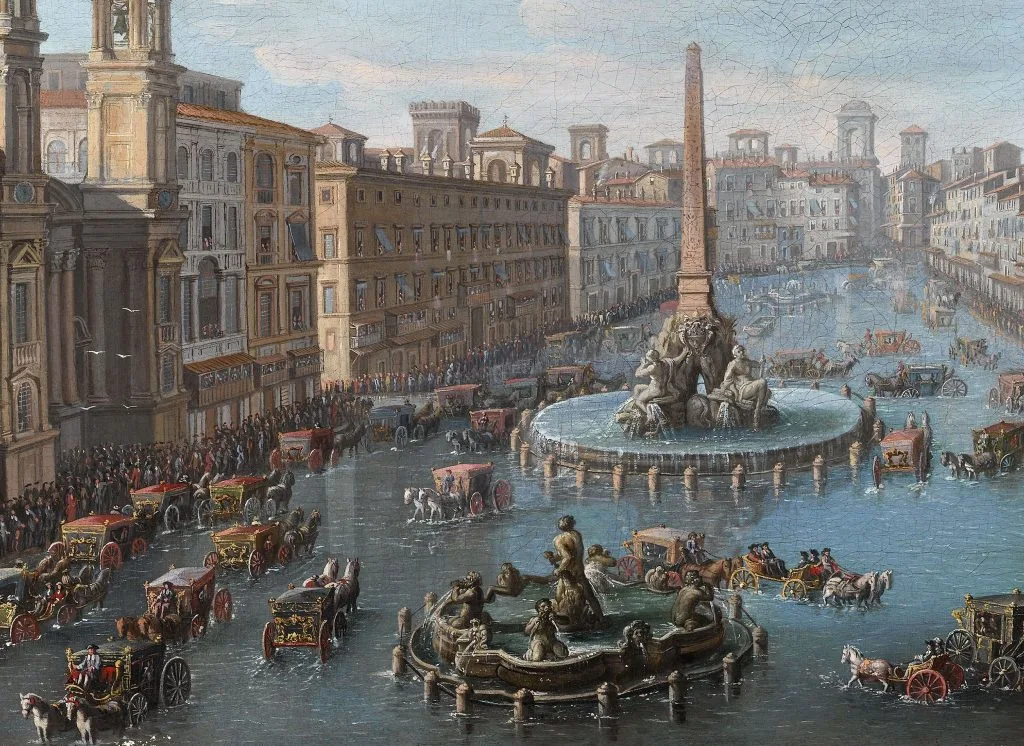One of the most amazing squares in the world can be found in the wonderful city of Rome.
In this post, you’ll discover the ultimate list of interesting Piazza Navona facts!
1. It’s located in the historic center of Rome
Piazza Navona is a public square in the capital of Italy, Rome. It’s located on the east bank of the Tiber River and right into the historic center of the city.
The most famous sites in the area are the Roman Pantheon, which is located right to the east of the square, and the Castel Sant’Angelo to the northwest on the other side of the river.
The Ancient Roman marketplace and its ruins, the Forum Romanum, are located About 1 kilometer (0.6 miles) to the southeast of the square, pretty much within walking distance!
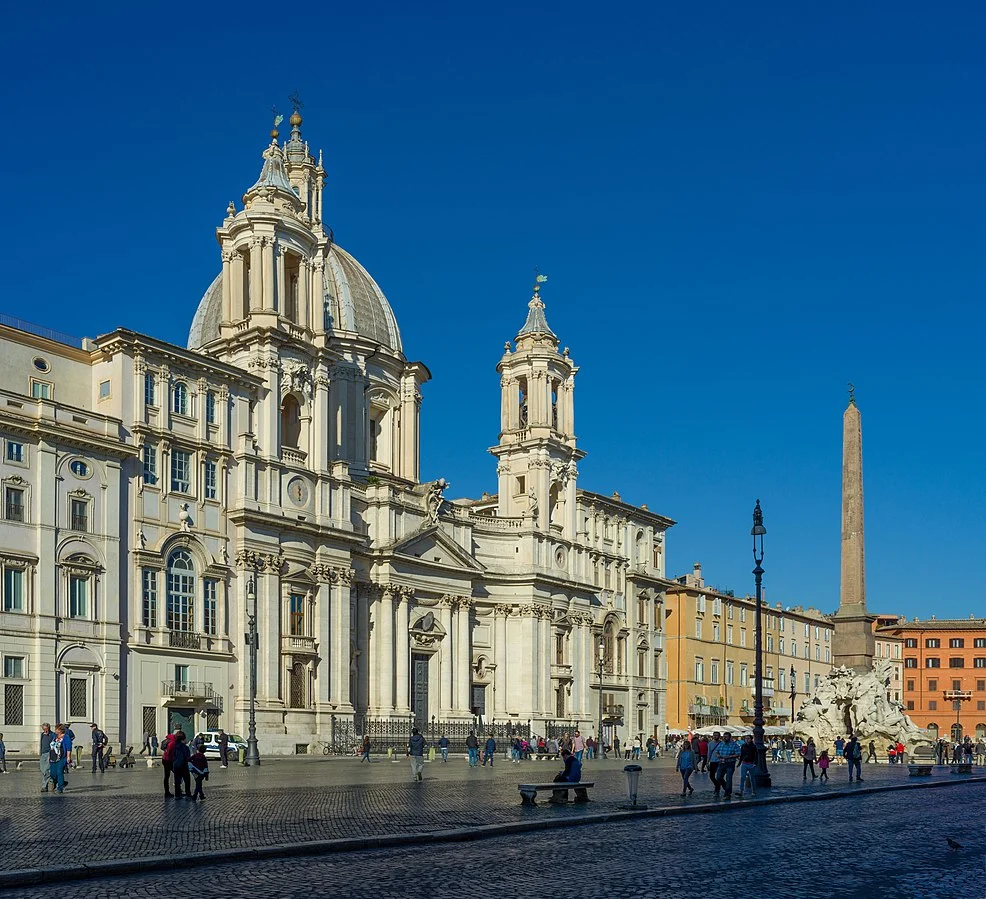
2. It was built on an Ancient Roman entertainment venue
The design and form of the square are no accident. That’s because it was built on top of one of the many Ancient Roman entertainment venues that were built all across the Roman Empire, including within the borders of the city.
This venue is referred to as the “Stadium of Domitian,” named after Roman Emperor Domitian who ruled over the Roman Empire at the end of the first century A.D.
This stadium was smaller than some of its counterparts such as the Flavian Amphitheater or “Colosseum,” which was built by Domitian’s father Vespasian, brother Titus, and the famous chariot-racing arena called the Circus Maximus.
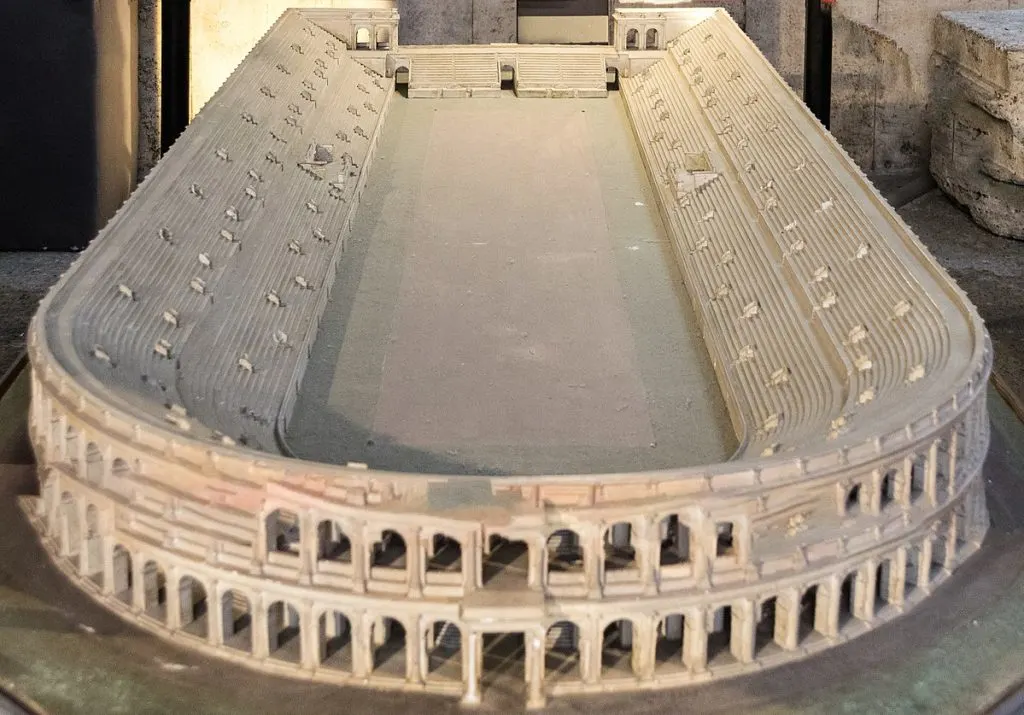
3. The square probably got its name from Domitian’s arena
Domitian’s stadium was completed in the year 86 A.D. and is estimated to have seated between 15,000 and 20,000 people, which makes it a medium-sized stadium.

Back in ancient times, the stadium wasn’t referred to as the “Stadium of Domitian” but as the “Circus Agonalis,” which translates to the “competition arena.”
Ancient Romans referred to games as “agones” and it’s believed that this changed over the centuries to “in avone” and eventually to “Navone” and “Navona,” which is how the square got its name.
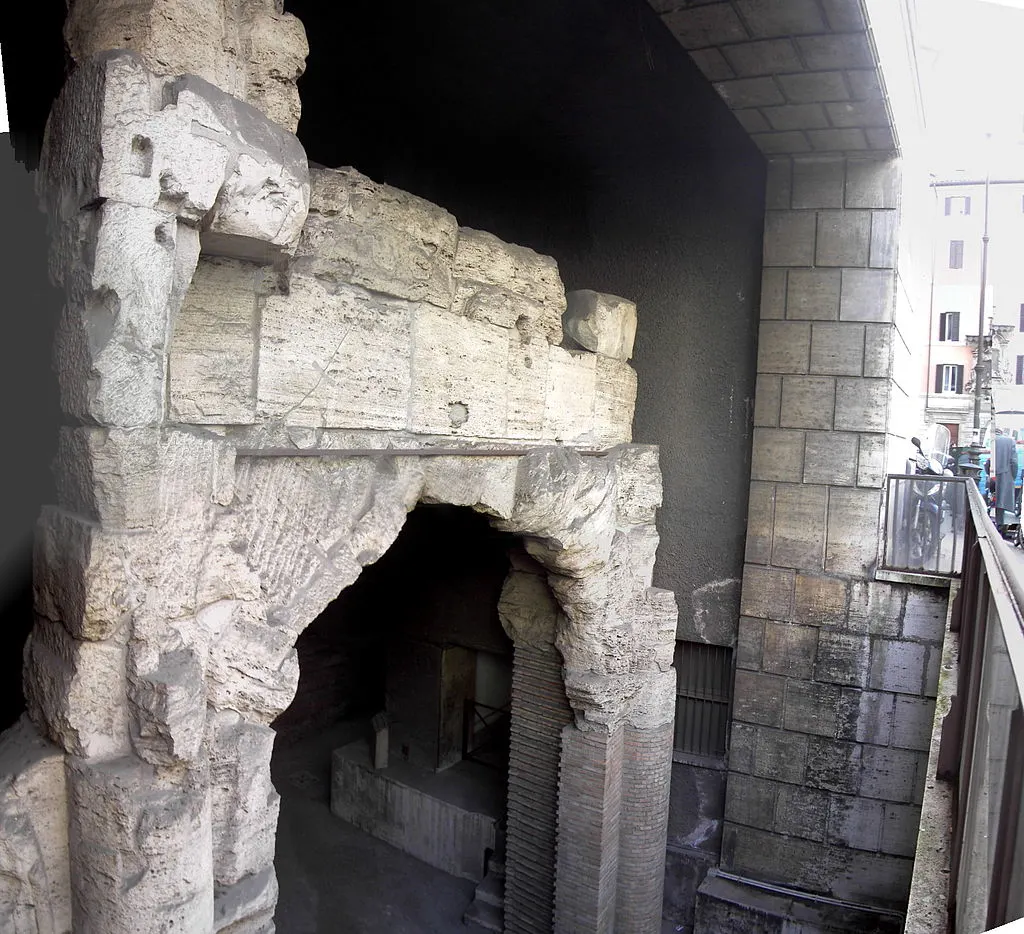
4. It was turned into a public square in the 15th century
Before the 15th century, the market of Rome was still located on the Capitoline Hill, one of the 7 historical hills of Rome located near the Roman Forum.
During the late 15th century, the market was moved to the area of the Piazza Navona and it’s only since then that the square became a public space, built on top of the ruins of Domitian’s Stadium.
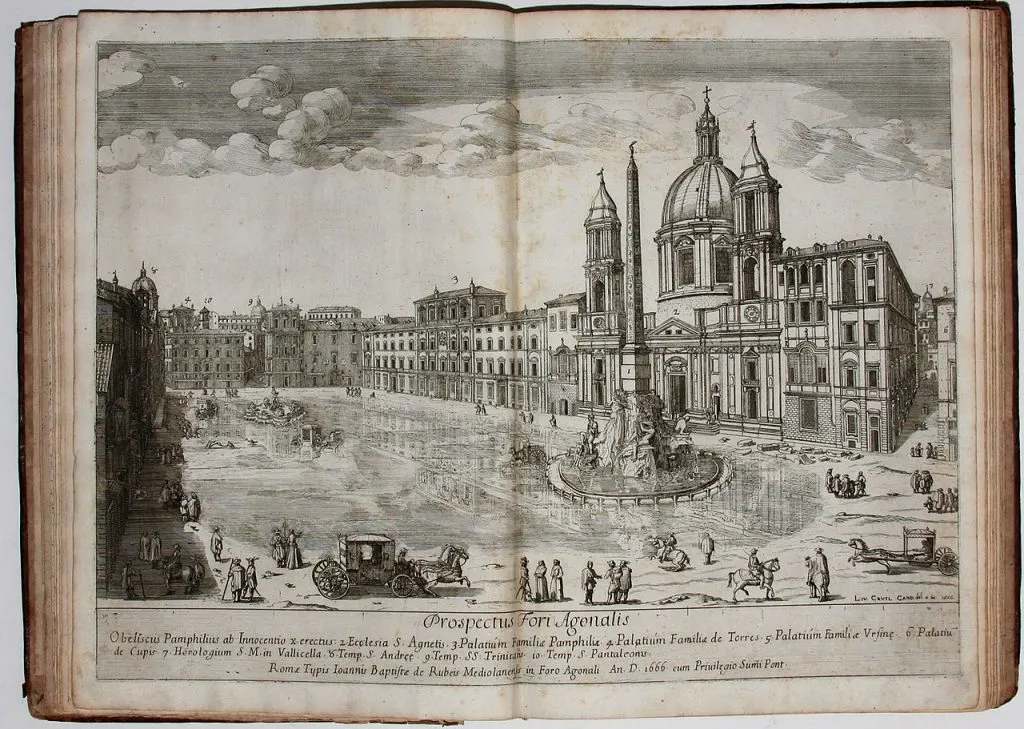
5. The square is a prime example of Roman Baroque architecture
The square was constructed during the pontificate of Pope Innocent X between 1644 and 1655, whose real name was Giovanni Battista Pamphilj. This happened at the same time that the most famous square in Rome was being constructed, Saint Peter’s Square in Vatican City.
Together with the fascinating square in front of the largest church in the world, St. Peter’s Basilica, Piazza Navona can be considered one of the most remarkable examples of Roman Baroque architecture.
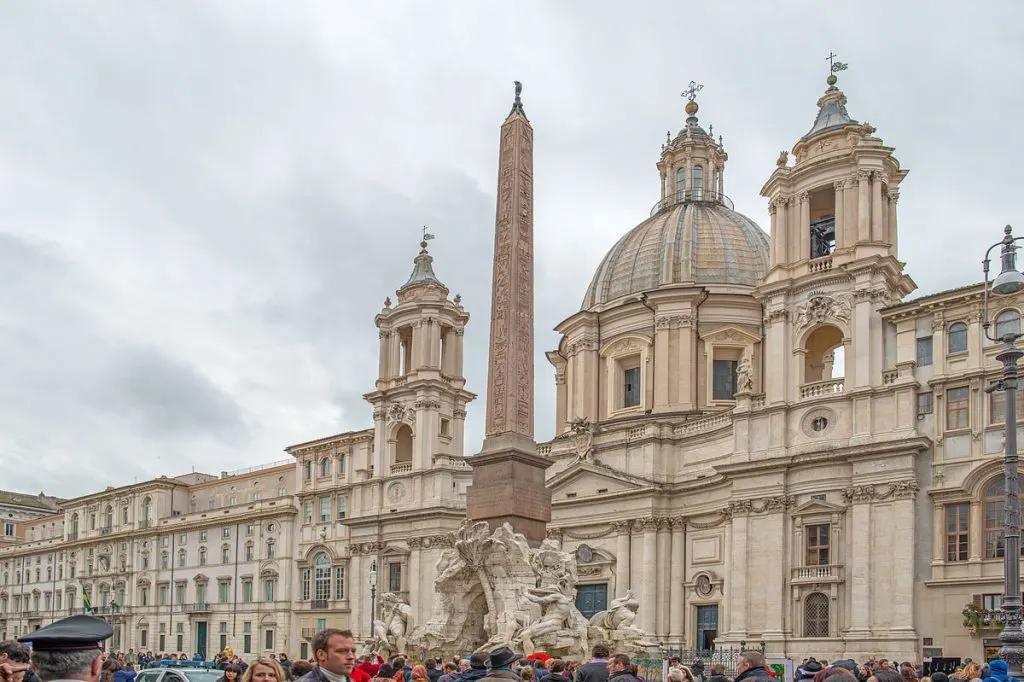
6. The Pope’s palace is one of the buildings facing the square
One of the most amazing Piazza Navona facts is that the family palace of Pope Innocent X was built right on the square. This palace is called the Palazzo Pamphili and was completed between 1644 and 1650.
This palace has been occupied by the Brazilian Embassy in Rome since 1920 and has been owned by the Brazilian government since 1960.
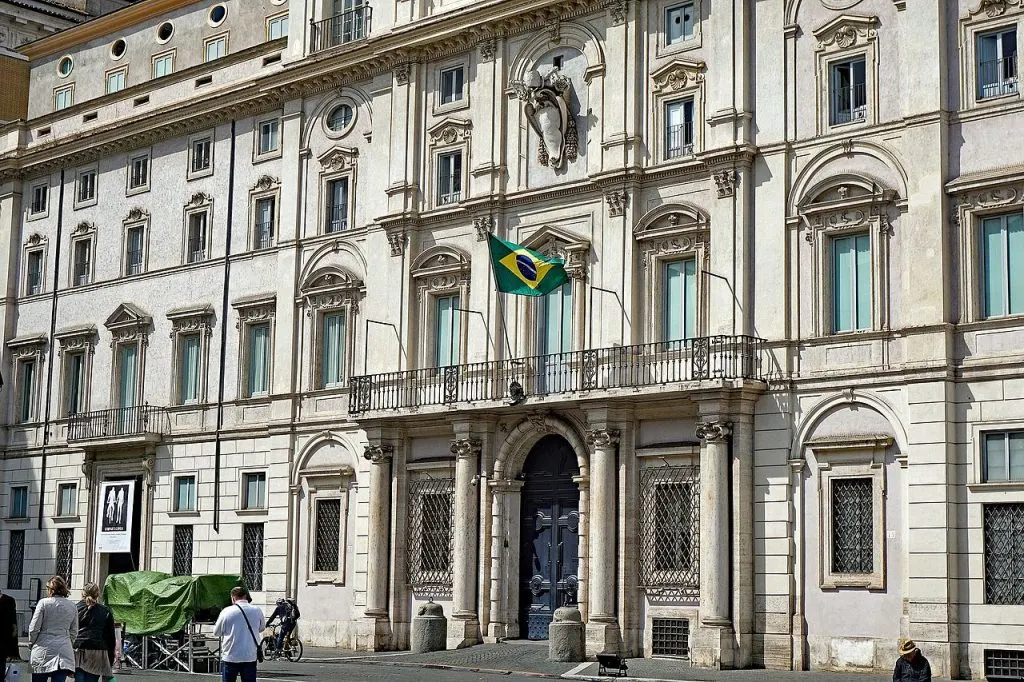
7. It features one of the most remarkable fountains in Rome
One of the most prominent features of the square is the so-called “Fontana dei Quattro Fiumi,” which translates to the “Fountain of the 4 Rivers.”
The fountain was designed by the architect of St. Peter’s Square, the famous Baroque artist Gian Lorenzo Bernini, and was completed in 1651.
The 4 Rivers represent the 4 continents through which the Catholic religion had spread back then. These are the Nile representing Africa, the Danube representing Europe, the Ganges representing Asia, and the Río de la Plata representing the Americas
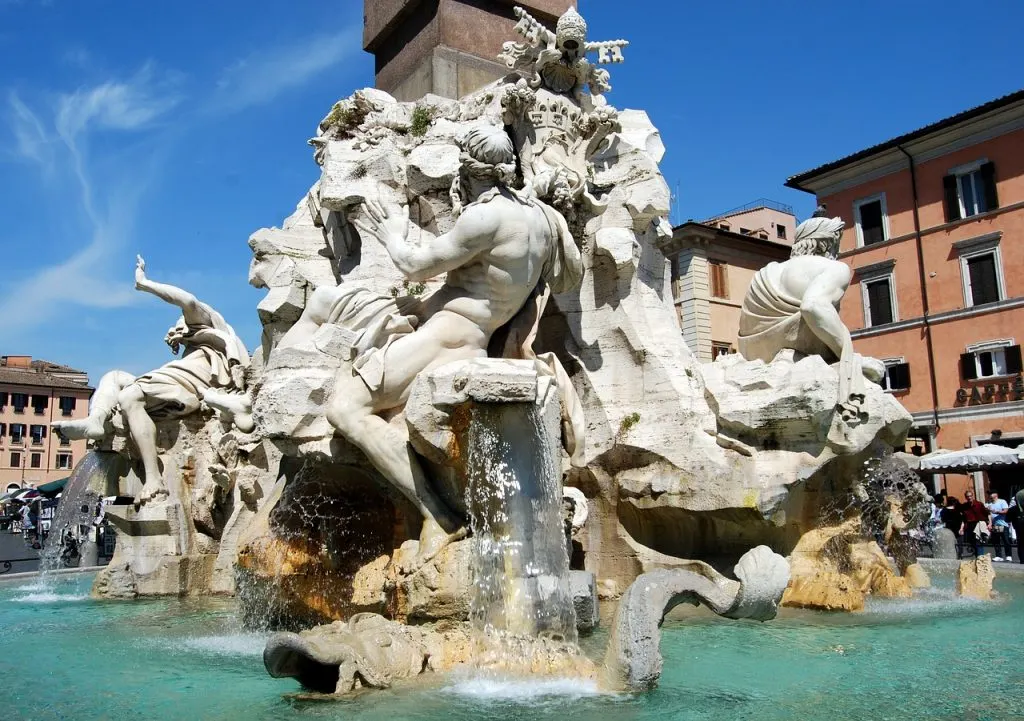
One of the most fascinating Piazza Navona facts is that the obelisk, which forms the centerpiece of the Fontana dei Quattro Fiumi, wasn’t imported originally from Egypt but commissioned by Emperor Domitian in the late 1st century A.D.
This means that the hieroglyphics which decorate the obelisk were carved into it by Romans. That’s why it was for a long time believed this was an original Egyptian Obelisk until it was discovered that the text is glorifying Domitian and one of his achievements
This massive structure stood on the site of the Circus of Maxentius for multiple centuries before it was moved in 4 pieces to the square to become part of its decorations.
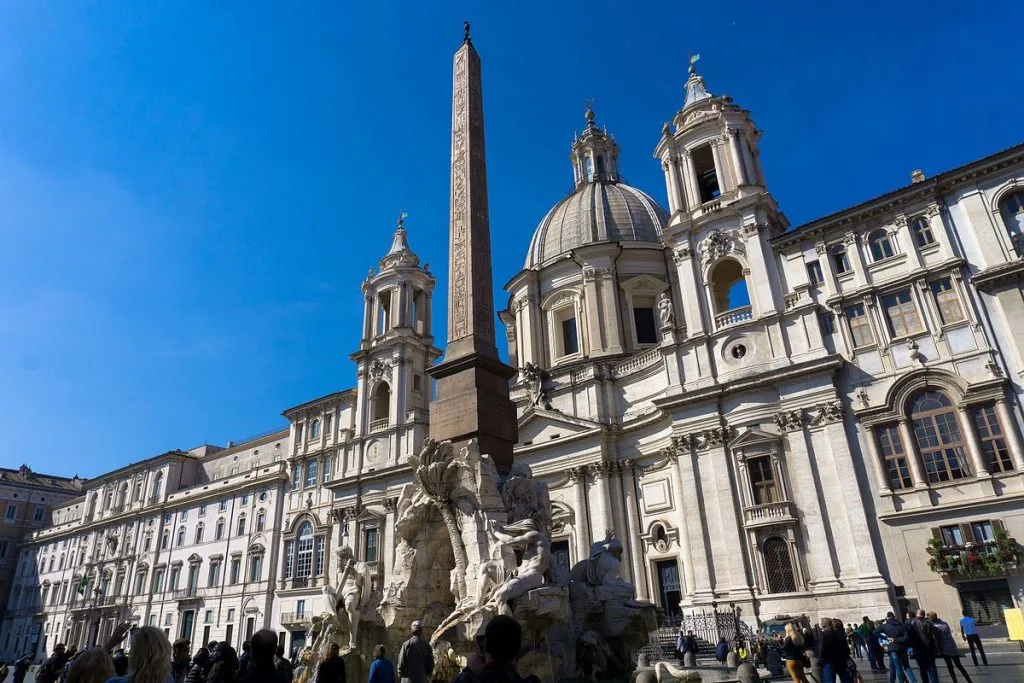
9. Bernini also sculpted one of the other 2 amazing fountains
It’s fair to conclude that Bernini was one of the most influential Baroque artists in history. This is again emphasized by the fact that he also earned the commission to sculpt the statue of the other fountain located at the square called the “Fontana del Moro.”
The original fountain was completed in 1575 but the statue of the Moor wrestling with a dolphin was added later on in the year 1653.
In 1874, the original statues decorating this fountain were moved to the Galleria Borghese and replaced with copies.

10. It was flooded during a festival for over 2 centuries
One of the most intriguing Piazza Navona facts is that between 1652 until 1866, the square was completely submerged during an annual festival in August, a tradition started by the Pamphilj family.
This event was canceled when the pavement level was raised in the 19th century.
